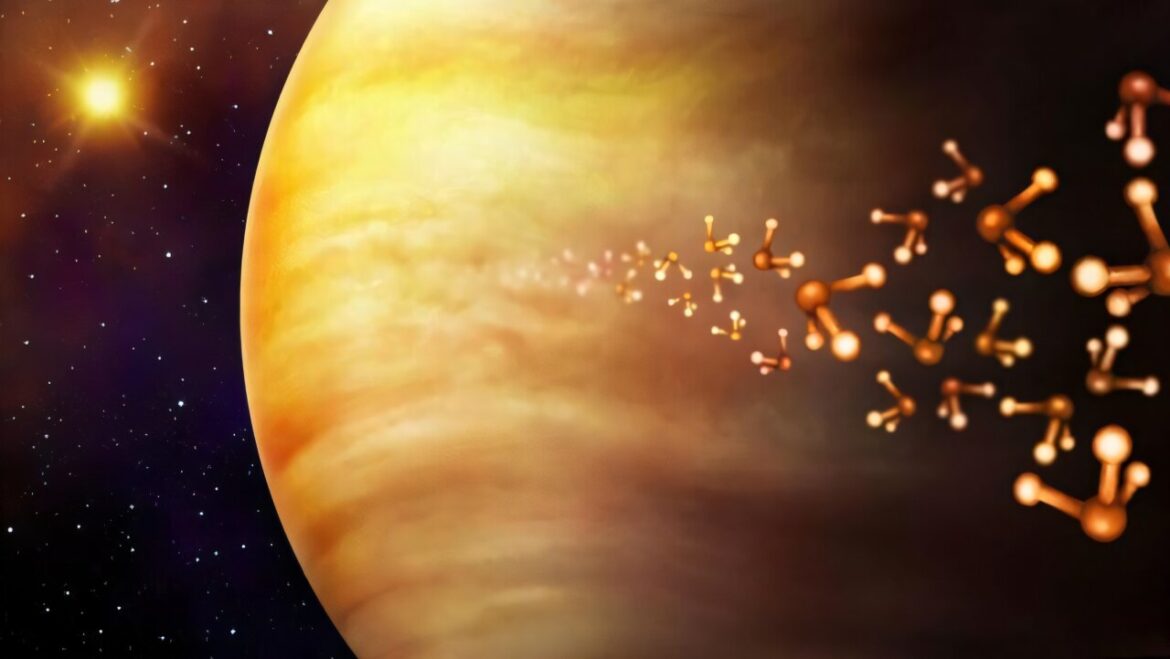Could life exist in the swirling, acidic clouds of Venus? A new UK-backed mission aims to find out by searching for unexplained gases, specifically those rich in hydrogen, that shouldn’t be there. The mission, dubbed VERVE (Venus Explorer for Reduced Vapors in the Environment), could finally answer one of the most tantalizing questions in astrobiology.
Over the past few years, scientists have detected potential biomarkers in the Venusian atmosphere: phosphine and ammonia. On Earth, these gases are primarily produced by biological activity or industrial processes. Their presence on Venus defies easy explanation, sparking intense debate and motivating this ambitious new venture.
Professor Jane Greaves of Cardiff University, who leads the team behind VERVE, presented the mission concept at the Royal Astronomical Society’s National Astronomy Meeting 2025 in Durham. The plan is to deploy a CubeSat-sized probe, costing approximately 50 million euros ($59 million), as a piggyback payload on the European Space Agency’s EnVision mission slated for launch in 2031. Upon reaching Venus, VERVE would detach and conduct an independent survey of phosphine, ammonia, and other unusual hydrogen-rich gases, while EnVision focuses on mapping the planet’s surface and interior. The science community waits on pins and needles!
“Our latest data has found more evidence of ammonia on Venus, with the potential for it to exist in the habitable parts of the planet’s clouds,” Professor Greaves stated. “There are no known chemical processes for the production of either ammonia or phosphine, so the only way to know for sure what is responsible for them is to go there.”
The hope is that VERVE can determine the abundance of these gases, pinpoint their source (whether volcanic activity on the surface or something within the atmosphere), and potentially identify if microbes are producing ammonia to neutralize the acidic environment of Venusian clouds.
The initial detection of phosphine in 2020 was met with both excitement and skepticism. Follow-up observations struggled to replicate the findings, leading to considerable controversy. However, researchers involved in the JCMT-Venus project, a long-term study of Venus’ atmosphere using the James Clerk Maxwell Telescope in Hawaii, persevered.
They tracked the phosphine signature over time, discovering that it appeared to fluctuate with the planet’s day-night cycle, suggesting it was being broken down by sunlight. They also found variations in the gas’s abundance depending on the location within Venus’ atmosphere.
“This may explain some of the apparently contradictory studies and is not a surprise given that many other chemical species, like sulfur dioxide and water, have varying abundances, and may eventually give us clues to how phosphine is produced,” explained Dr. Dave Clements, of Imperial College London, leader of the JCMT-Venus project.
The discovery of ammonia further complicates the picture. On Earth, its presence is tied to biological activity and industrial processes. The challange is, Venus lacks any known equivalent processes to explain its existence there. It’s a puzzling anomaly that demands investigation.
- The VERVE mission aims to map phosphine, ammonia, and other gases rich in hydrogen.
- The probe is designed to detach from the ESA’s EnVision mission upon arrival at Venus.
- Scientists hope to determine the source and abundance of these unusual gases.
- Extremophile microbes could potentially survive in the Venusian clouds.
While the surface of Venus is scorching hot, with temperatures around 450°C, the cloud layer at an altitude of approximately 50 kilometers (31 miles) offers more temperate conditions. Temperatures range from 30°C to 70°C, and the atmospheric pressure is similar to that found on Earth’s surface. These conditions, while still extreme, could potentially support the survival of “extremophile” microbes that may have migrated to the clouds during a period when Venus was more habitable.
For some, the prospect of life existing beyond Earth is more than just a scientific pursuit; it represents a fundamental shift in our understanding of the universe and our place within it. Maria Rodriguez, a local schoolteacher who has been following the Venus research closely, put it this way: “Something fundamental had shifted in how I view the cosmos, the moment I realized that life—even microbial life—might exist on another planet. It’s just… awe-inspiring.”
The VERVE mission faces significant overcoming barriers, including the harsh Venusian environment. Building a probe capable of withstanding the extreme temperatures, pressures, and corrosive atmosphere presents a formidable engineering challenge. Furthermore, accurately measuring the trace amounts of target gases requires highly sensitive and reliable instruments. These technologies are not necessarily out of reach, but require careful design and testing.
However, the potential reward—the discovery of extraterrestrial life—makes the effort worthwhile. The achieved success of this mission could redefine our understanding of life’s potential and the conditions necessary for its existence. It would also offer profound insights into the evolution of planets and the possibilities for life beyond Earth.
The scientific community eagerly awaits the launch of EnVision and the deployment of VERVE. New research papers detailing the latest discoveries about Venus are expected later this year, further fueling the anticipation for this groundbreaking mission. The exploration of Venus, once largely dismissed as a barren wasteland, is now at the forefront of the search for life beyond Earth. The possibility of finding life in the clouds of Venus, no matter how improbable it may seem, has reignited our sense of wonder and spurred us to look outward, toward the stars, with renewed hope and curiosity. It truly feels like we are on the edge of discovery. Or at least, that’s how the science beat feels this week.



